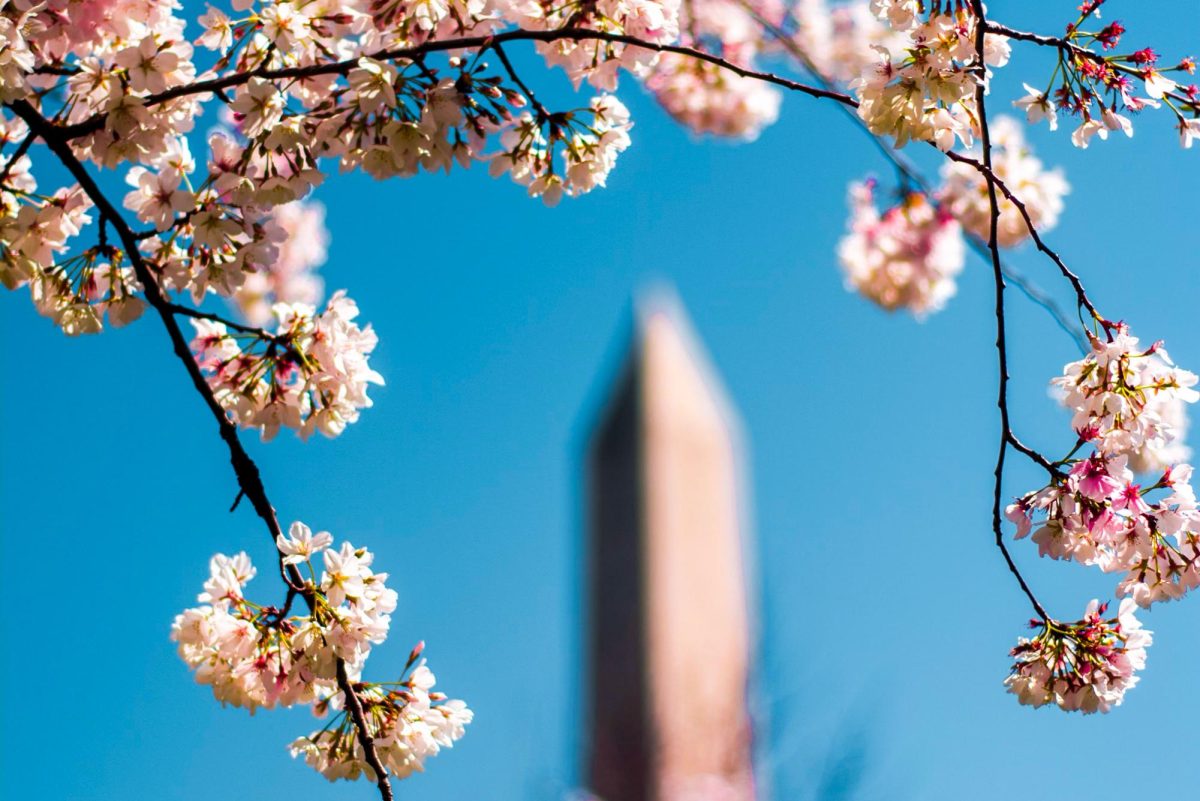Cherry blossom season is coming early this year, with peak bloom expected between March 23 to March 26, according to the National Mall National Park Service.
Usually, peak bloom — or the day that 70 percent of the Tidal Basin’s Yoshino cherry blossoms open — falls on the last week of March or the first week of April and can last up to one or two weeks. Due to unseasonably warm weather in January, the cherry trees never went dormant this year, which normally occurs during the winter when temperatures are around 45 degrees Fahrenheit.
“One of #WashingtonDC’s most anticipated events, the gorgeous blossoming trees produce a short-lived scene of splendor,” NPS said in a Thursday tweet.
NPS’s horticulturists look after the cherry trees and their predictions for peak bloom are determined by observations of the cherry trees, the weather and historical data. They examine the temperatures leading up to the typical bloom and use Growing Degree Days, a system that calculates the maximum daily temperatures leading up to the bloom, to see temperatures that will propel the trees from their dormant stage into peak bloom and predict peak bloom dates.
Global warming has warmed winter temperatures in the U.S. since 1980. In D.C., winters have experienced an 0.81 degree Fahrenheit increase in temperature per decade since 1980 and the temperatures continue to rise, according to the Washington Post’s Climate Lab.
Last season, experts said the cherry blossoms bloomed early because of climate change in D.C. Cherry trees bloomed as early as Feb. 17, with a peak bloom of March 23, which is around two weeks earlier than the usual bloom dates. The Tidal Basin’s cherry trees have consistently reached peak bloom seven days earlier than the historical average peak bloom date of April 4 since 1921, according to the EPA.
The Cherry Blossom Festival will be held March 20 to April 14, which is the same date range as last year’s festival before it was moved forward due to the early bloom in 2023.
The Cherry Blossom Watch has reported that some parts of the Tidal Basin’s perimeter, sea wall and banks are underwater, which has become a regular occurrence due to rising sea levels and sinking foundations. After this season’s bloom, NPS will begin a restoration project set to begin mid-2024 and predicted to last two years. NPS is still determining how construction might affect cherry blossom events in the coming years.
Affecting a 1.2-mile stretch around West Potomac Park and a $112.8 million budget, the project is set to raise the sea wall by around five feet, improve drainage and widen walkways. Officials will cut down 300 cherry trees for the project, which will be replaced by 400 trees at the end of the project, according to NPS.





